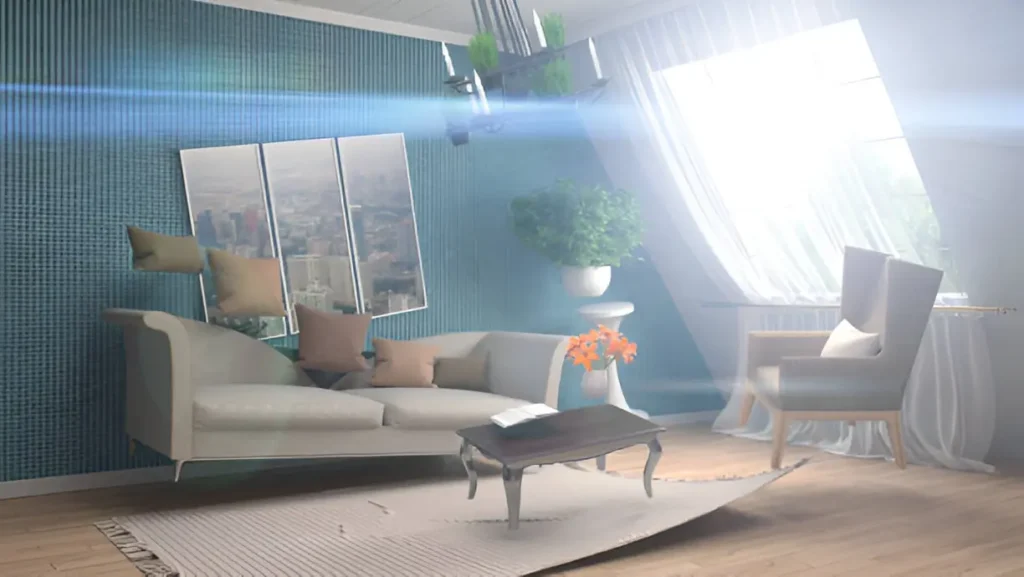UV rays can cause significant damage to interior furnishings, fading fabrics, discoloring wood, and wearing out cherished items like sofas and rugs. While natural light enhances a home, it also leads to costly repairs and replacements. The solution? Learn how to protect your belongings from UV damage while still enjoying the benefits of sunlight.
Understanding UV Rays and Interior Damage
Ultraviolet radiation consists of three types: UVA, UVB, and UVC rays. While the earth’s atmosphere blocks most UVC rays, UVA and UVB rays easily penetrate through windows and cause significant damage to interior materials.
UVA rays, which make up about 95% of UV radiation reaching the earth, are particularly problematic for indoor spaces. These longer wavelengths can penetrate deep into materials, breaking down chemical bonds in dyes, fibers, and finishes. UVB rays, though less prevalent, pack more energy and cause rapid surface damage to exposed items.
Different materials react to UV exposure in various ways:
Fabrics and Upholstery: Natural fibers like cotton, silk, and wool are especially vulnerable to UV damage. The rays break down the molecular structure of dyes, causing colors to fade unevenly. Synthetic materials fare better but still suffer from weakening and discoloration over time.
Wood Furniture: UV rays penetrate wood surfaces, breaking down lignin—the natural polymer that gives wood its color and strength. This process causes darkening in some woods and bleaching in others, creating uneven patination that diminishes both beauty and value.
Artwork and Photographs: Paper, canvas, and photographic materials are extremely sensitive to UV exposure. Colors fade, paper becomes brittle, and images deteriorate irreversibly. Museum-quality pieces can lose significant value from even minimal UV exposure.
Flooring Materials: Hardwood floors, carpets, and rugs all suffer from UV damage. Wood floors develop uneven coloring, while carpet fibers weaken and fade, particularly in high-traffic sunny areas.
The Comprehensive Benefits of Window Tinting
Window tinting offers a sophisticated solution that addresses multiple interior protection needs simultaneously. Professional-grade window films can block up to 99% of harmful UV rays while maintaining the natural light you love.
Superior UV Protection: Quality window tinting films contain UV-blocking compounds that act as a barrier between harmful rays and your interior furnishings. This protection extends the lifespan of fabrics, artwork, and furniture significantly, often paying for itself through reduced replacement costs.
Temperature Control and Energy Efficiency: Window tinting reduces heat gain by reflecting and absorbing solar energy before it enters your home. This thermal regulation means less strain on your HVAC system, lower energy bills, and more consistent indoor temperatures. Many homeowners see 10-15% reductions in cooling costs after installation.
Glare Reduction for Comfort: Excessive glare makes it difficult to enjoy certain areas of your home, particularly spaces with televisions or computer screens. Window tinting reduces glare while preserving visibility, making every room more comfortable throughout the day.
Enhanced Privacy and Security: Depending on the tinting level you choose, window films can increase privacy during daylight hours while maintaining your view of the outdoors. Some films also add a layer of shatter resistance, providing additional security benefits.
Exploring Window Tinting Options
The window tinting market offers several distinct categories, each with specific advantages for interior protection.
Ceramic Window Films: These premium options use advanced ceramic particles to block heat and UV rays without interfering with electronic signals. Ceramic films offer superior clarity, don’t fade over time, and provide excellent UV protection. While more expensive initially, their longevity and performance make them cost-effective for serious interior protection.
Metallic Films: These films incorporate metallic particles to reflect heat and UV rays effectively. They provide good protection and heat reduction but may interfere with cell phone signals and GPS devices. The metallic appearance can also change your home’s exterior aesthetic.
Dyed Window Films: The most budget-friendly option, dyed films absorb heat and UV rays through colored dyes embedded in the film. While less expensive, they tend to fade over time and don’t offer the same level of protection as ceramic or metallic alternatives.
Crystalline Films: These virtually clear films offer excellent heat and UV rejection without changing your windows’ appearance. They’re ideal for homeowners who want maximum protection with minimal visual impact.
When selecting window tinting, consider factors like your local climate, the orientation of your windows, and your specific protection needs. Professional installation services, including auto window tintings like those in Salt Lake, often provide consultation to help you choose the most appropriate solution for your situation.
Professional Installation and Ongoing Maintenance
Proper installation is crucial for maximizing the benefits and longevity of window tinting. Professional installers have the tools, experience, and knowledge to ensure optimal results.
The installation process typically begins with thorough window cleaning to remove any dirt, debris, or residue that could affect adhesion. Installers then precisely measure and cut the film to fit each window perfectly, paying careful attention to edges and corners where peeling commonly occurs.
Professional installation includes removing air bubbles and ensuring smooth, even application across the entire surface. Quality installers also know how to work around window hardware and architectural details for a seamless appearance.
Maintenance Requirements: Window tinting requires minimal ongoing maintenance, but proper care extends its lifespan significantly. Clean tinted windows with ammonia-free cleaners and soft cloths to avoid scratching the film surface. Avoid using abrasive materials or cleaning tools that could damage the protective layer.
Warranty Considerations: Professional installation typically includes comprehensive warranties covering both materials and workmanship. These warranties often extend for 10-15 years or more, providing peace of mind and protection for your investment.
Conclusion
Window tinting protects your home’s interior by blocking harmful UV rays, preserving furniture, artwork, and flooring while reducing cooling costs. It’s a cost-effective solution that maintains your home’s beauty and value over time. Consult a professional to find the best options for your needs and style.
Also Read-The Ideal Retirement Home: 55 Club Style



